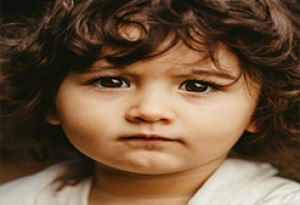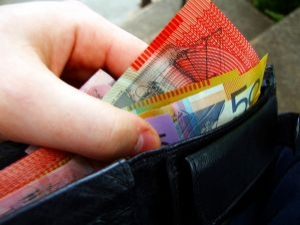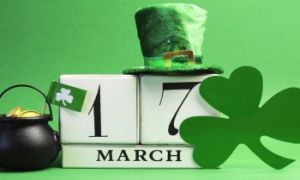Lighting plays a crucial role in early childhood environments, impacting everything from mood and behavior to learning and development. The following article provides information on Effect Of Lighting, Effects Of Poor Lighting, The Effects Of Poor Lighting On Children, Dim Lighting In Early Childhood and more.
Effect Of Lighting
Here are some key points about natural and artificial lighting in early childhood settings:
Natural Lighting
Benefits:
- Health and Well-being: Natural light helps regulate sleep-wake cycles and boosts serotonin levels, which can improve mood, energy, and overall well-being.
- Learning and Development: Exposure to natural light has been linked to better concentration, improved cognitive function, and enhanced visual and motor skills.
- Behavior: Natural light can create a more inviting and calming environment, reducing stress and promoting positive behavior.
Implementation Tips:
- Maximize Windows: Use large windows and skylights to bring in as much natural light as possible.
- Outdoor Time: Incorporate outdoor activities to ensure children get ample exposure to natural light.
- Reflective Surfaces: Use mirrors and light-colored walls to reflect natural light throughout the space.
Artificial Lighting
Considerations:
- Type of Light: Choose lighting that mimics natural light as closely as possible. Halogen and LED lights are often recommended over fluorescent lights, which can flicker and cause discomfort.
- Adjustability: Use dimmer switches and multiple light sources to adjust lighting based on different activities and times of day.
- Safety: Ensure all lighting fixtures are safe, with no exposed wires or overly bright bulbs that could cause glare.
Implementation Tips:
- Task Lighting: Use specific lighting for different areas, such as reading corners, art stations, and play areas.
- Soft Lighting: Incorporate soft, warm lighting for relaxation areas to create a cozy and calming atmosphere.
- Interactive Elements: Use light in playful ways, such as light tables, projectors, and shadow play, to engage children’s curiosity and creativity.
Balancing natural and artificial lighting can create a dynamic and supportive learning environment for young children.
Effects Of Poor Lighting
Lighting plays a crucial role in early childhood environments, impacting everything from mood and behavior to learning and development. Here are some key points about natural and artificial lighting in early childhood settings:
Natural Lighting
Benefits:
- Health and Well-being: Natural light helps regulate sleep-wake cycles and boosts serotonin levels, which can improve mood, energy, and overall well-being.
- Learning and Development: Exposure to natural light has been linked to better concentration, improved cognitive function, and enhanced visual and motor skills.
- Behavior: Natural light can create a more inviting and calming environment, reducing stress and promoting positive behavior.
Implementation Tips:
- Maximize Windows: Use large windows and skylights to bring in as much natural light as possible.
- Outdoor Time: Incorporate outdoor activities to ensure children get ample exposure to natural light.
- Reflective Surfaces: Use mirrors and light-colored walls to reflect natural light throughout the space.
Artificial Lighting
Considerations:
- Type of Light: Choose lighting that mimics natural light as closely as possible. Halogen and LED lights are often recommended over fluorescent lights, which can flicker and cause discomfort.
- Adjustability: Use dimmer switches and multiple light sources to adjust lighting based on different activities and times of day.
- Safety: Ensure all lighting fixtures are safe, with no exposed wires or overly bright bulbs that could cause glare.
Implementation Tips:
- Task Lighting: Use specific lighting for different areas, such as reading corners, art stations, and play areas.
- Soft Lighting: Incorporate soft, warm lighting for relaxation areas to create a cozy and calming atmosphere.
- Interactive Elements: Use light in playful ways, such as light tables, projectors, and shadow play, to engage children’s curiosity and creativity.
Balancing natural and artificial lighting can create a dynamic and supportive learning environment for young children.
The Effects Of Poor Lighting On Children
Poor lighting can have several negative effects on children, impacting their health, behavior, and learning outcomes. Here are some key points:
Health Effects
-
Eye Strain and Fatigue: Insufficient or harsh lighting can cause eye strain, headaches, and fatigue, making it difficult for children to focus on tasks.
-
Sleep Disruption: Poor lighting, especially exposure to bright artificial light in the evening, can disrupt circadian rhythms, leading to sleep problems.
-
Mood and Mental Health: Inadequate lighting can contribute to irritability, depression, and a lack of interest in activities.
Learning and Behavior
-
Reduced Concentration: Poor lighting can make it harder for children to concentrate, affecting their ability to learn and retain information.
-
Increased Absenteeism: Classrooms with inadequate lighting have been associated with higher rates of absenteeism.
-
Behavioral Issues: Poor lighting can create an uncomfortable environment, leading to increased stress and negative behavior.
Cognitive Development
-
Lower Academic Performance: Studies have shown that children in well-lit classrooms perform better academically compared to those in poorly lit environments.
-
Visual and Motor Skills: Adequate lighting is crucial for the development of visual and motor skills, which are essential for tasks like reading and writing.
Ensuring proper lighting in early childhood settings is essential for creating a supportive and effective learning environment.
Improving lighting in your classroom can significantly enhance the learning environment for your students. Here are some practical tips to help you achieve better lighting:
Maximizing Natural Light
-
Use Large Windows: If possible, ensure windows are unobstructed by heavy curtains or furniture. This allows maximum natural light to enter the room.
-
Reflective Surfaces: Incorporate mirrors and light-colored walls to reflect natural light throughout the space.
-
Outdoor Activities: Plan activities that take place outside or near windows to make the most of natural daylight.
Enhancing Artificial Lighting
-
Choose the Right Bulbs: Use LED or halogen bulbs that mimic natural light. Avoid fluorescent lights, which can flicker and cause discomfort.
-
Adjustable Lighting: Install dimmer switches to adjust the brightness according to different activities and times of day.
-
Task Lighting: Use specific lighting for different areas, such as reading corners, art stations, and play areas. This ensures each activity has the appropriate lighting.
Creating a Balanced Environment
-
Layered Lighting: Combine ambient (general), task, and accent lighting to create a well-lit and flexible environment.
-
Soft Lighting for Relaxation: Use soft, warm lighting in areas designated for relaxation or quiet activities to create a calming atmosphere.
-
Interactive Lighting: Incorporate light tables, projectors, and shadow play to engage children’s curiosity and creativity.
Safety Considerations
-
Secure Fixtures: Ensure all lighting fixtures are securely installed and safe for children.
-
Avoid Glare: Position lights to avoid direct glare on work surfaces and screens.
-
Regular Maintenance: Regularly check and maintain lighting fixtures to ensure they are functioning correctly and safely.
By thoughtfully combining natural and artificial lighting, you can create a dynamic and supportive learning environment that benefits all aspects of children’s development. Are there any specific lighting challenges you face in your classroom?
Dim lighting in early childhood settings can have both positive and negative effects, depending on how it is used. Here are some key points to consider:
Potential Negative Effects
-
Reduced Cognitive Function: Dim lighting can make it harder for children to concentrate and process information effectively, potentially impacting learning outcomes.
-
Eye Strain: Insufficient lighting can cause eye strain and fatigue, making it difficult for children to focus on tasks.
-
Sleep Disruption: Exposure to dim light before bedtime can disrupt the production of melatonin, a hormone that regulates sleep, leading to sleep disturbances.
Potential Positive Uses
-
Calming Atmosphere: Dim lighting can create a soothing and calming environment, which is beneficial for activities like naptime, reading, or quiet play.
-
Exploration and Creativity: Dim lighting can be used creatively for activities like shadow play, light tables, and exploring light and dark, which can stimulate imagination and curiosity.
-
Behavior Management: Adjusting lighting levels can help manage children’s energy levels and behavior. For example, dimming the lights can signal a transition to quieter activities.
Tips for Using Dim Lighting Effectively
-
Balance with Natural Light: Ensure that dim lighting is balanced with periods of natural light exposure to support overall health and well-being.
-
Task-Specific Lighting: Use brighter task lighting for activities that require focus, such as reading or art projects, and reserve dim lighting for relaxation and quiet time.
-
Interactive Elements: Incorporate interactive lighting elements like light tables, projectors, and shadow play to make dim lighting a part of engaging learning activities.
By thoughtfully incorporating dim lighting into your classroom, you can create a versatile and supportive environment that meets the diverse needs of young children.
Creating Sensory Friendly Dim Lighting
Creating a sensory-friendly dim lighting environment can greatly benefit children, especially those with sensory sensitivities. Here are some practical tips to help you design such a space:
Lighting Choices
- Adjustable Lighting: Use dimmer switches to control the brightness of the lights. This allows you to adjust the lighting based on the activity and the needs of the children.
- Soft, Warm Lights: Opt for soft, warm LED lights instead of harsh fluorescent lights. Warm lighting is more calming and less likely to cause discomfort.
- Color-Changing Lights: Incorporate color-changing LED lights to create different moods and atmospheres. Soft blues and greens can be particularly calming.
Design Elements
-
Light Filters and Covers: Use light filters or covers to diffuse harsh lighting and reduce glare. This can make the environment more comfortable for children.
-
Reflective Surfaces: Use mirrors and light-colored walls to help distribute light evenly throughout the room, reducing the need for bright overhead lights.
-
Natural Light: Maximize the use of natural light during the day by keeping windows unobstructed and using sheer curtains to diffuse sunlight.
Sensory-Friendly Features
-
Interactive Lighting: Incorporate light tables, projectors, and shadow play areas to engage children in sensory activities. These can be both calming and stimulating, depending on how they are used.
-
Quiet Zones: Create designated quiet zones with dim lighting where children can retreat to if they feel overwhelmed. These areas can be equipped with soft furnishings and calming textures.
-
Calming Colors: Use muted, calming colors for walls and furnishings to create a soothing environment. Soft blues, greens, and neutral tones are often effective.
Safety and Maintenance
-
Secure Fixtures: Ensure all lighting fixtures are securely installed and safe for children to interact with.
-
Regular Checks: Regularly check and maintain lighting fixtures to ensure they are functioning correctly and safely.
-
Avoid Flickering Lights: Ensure that all lights are stable and do not flicker, as flickering can be particularly distressing for children with sensory sensitivities.
By thoughtfully incorporating these elements, you can create a sensory-friendly environment that supports the well-being and development of all children.
Further Reading
Montessori Preschool Educator Leaves Lights Off During The Day
Light Impacts Classroom, TCPI
Exposure To Light, Colorado Education
Dim Lighting In The Classroom, Science Daily
Sensory Room Design, The Designer







 As an Educator in Australia, your pay rate falls under the Children’s Services Award 2010. This award states the minimum amount that an employer can
As an Educator in Australia, your pay rate falls under the Children’s Services Award 2010. This award states the minimum amount that an employer can When working as a qualified Early Childhood Teacher (with a university degree) within a service, your rate of pay will come from the Educational Services
When working as a qualified Early Childhood Teacher (with a university degree) within a service, your rate of pay will come from the Educational Services When working as a Diploma Qualified Educator your pay rate is from the Children's Services Award 2010. This Award states your minimum rate of pay
When working as a Diploma Qualified Educator your pay rate is from the Children's Services Award 2010. This Award states your minimum rate of pay When working as a Cert 3 Qualified Educator, your pay rate is from the Children's Services Award 2010. This Award states your minimum rate of
When working as a Cert 3 Qualified Educator, your pay rate is from the Children's Services Award 2010. This Award states your minimum rate of Educational Leaders play a crucial role in their early childhood service by ensuring that the educational program aligns with best practices and supports the holistic
Educational Leaders play a crucial role in their early childhood service by ensuring that the educational program aligns with best practices and supports the holistic In early childhood education and care, ratios are more than a technicality—they are a frontline safeguard. Every child deserves responsive supervision, emotional connection, and developmental
In early childhood education and care, ratios are more than a technicality—they are a frontline safeguard. Every child deserves responsive supervision, emotional connection, and developmental Here’s a comprehensive Mobile Phone and Smart Watch Policy tailored for early childhood education and care (ECEC) services in Australia, aligned with the latest 2025
Here’s a comprehensive Mobile Phone and Smart Watch Policy tailored for early childhood education and care (ECEC) services in Australia, aligned with the latest 2025 With the new national child safety reforms kicking in on 1 September 2025, early childhood services like yours have a real opportunity to lead the
With the new national child safety reforms kicking in on 1 September 2025, early childhood services like yours have a real opportunity to lead the The Sea of Fish Challenge is a national initiative that invites children, educators, families, and communities to create and display fish artworks as a symbol
The Sea of Fish Challenge is a national initiative that invites children, educators, families, and communities to create and display fish artworks as a symbol Across the early childhood education and care sector, educators are sounding the alarm: current staffing ratios are insufficient to deliver safe, meaningful, and developmentally appropriate
Across the early childhood education and care sector, educators are sounding the alarm: current staffing ratios are insufficient to deliver safe, meaningful, and developmentally appropriate


